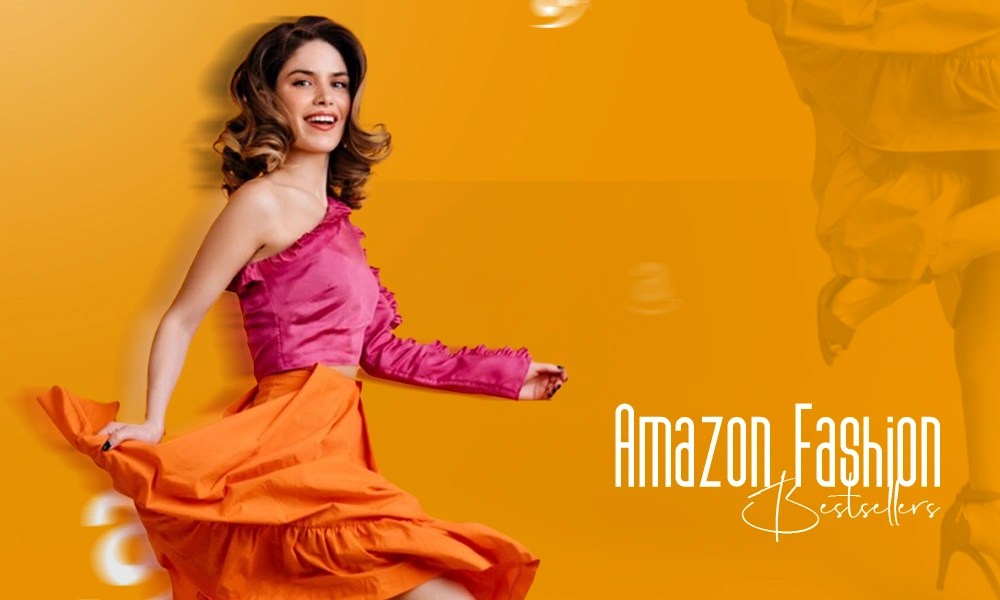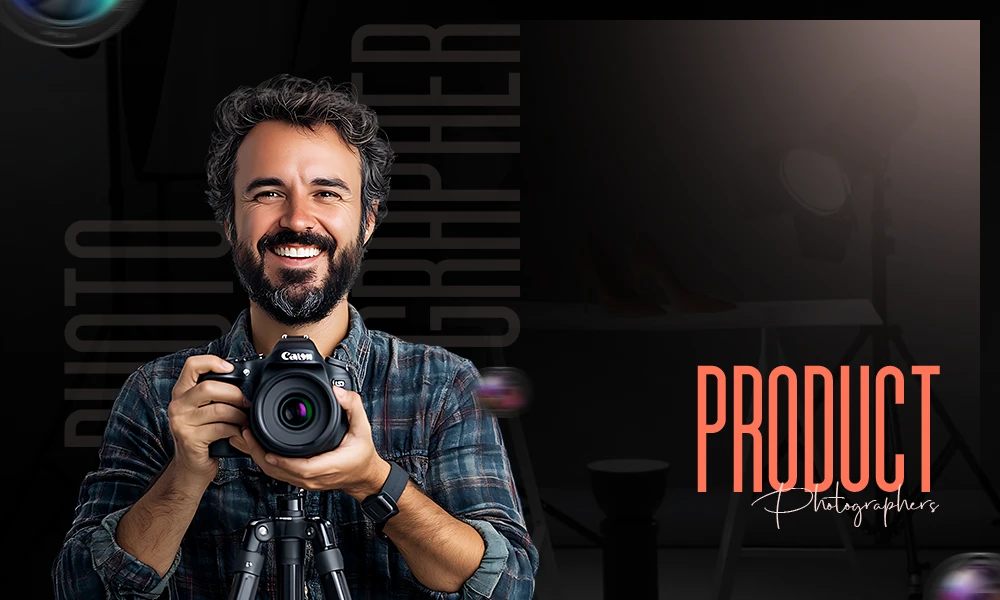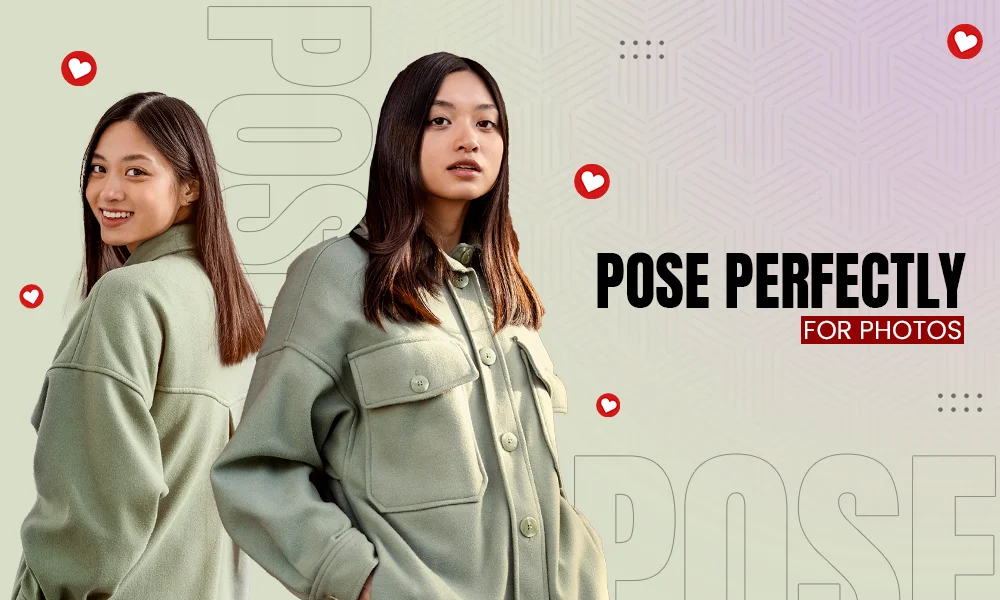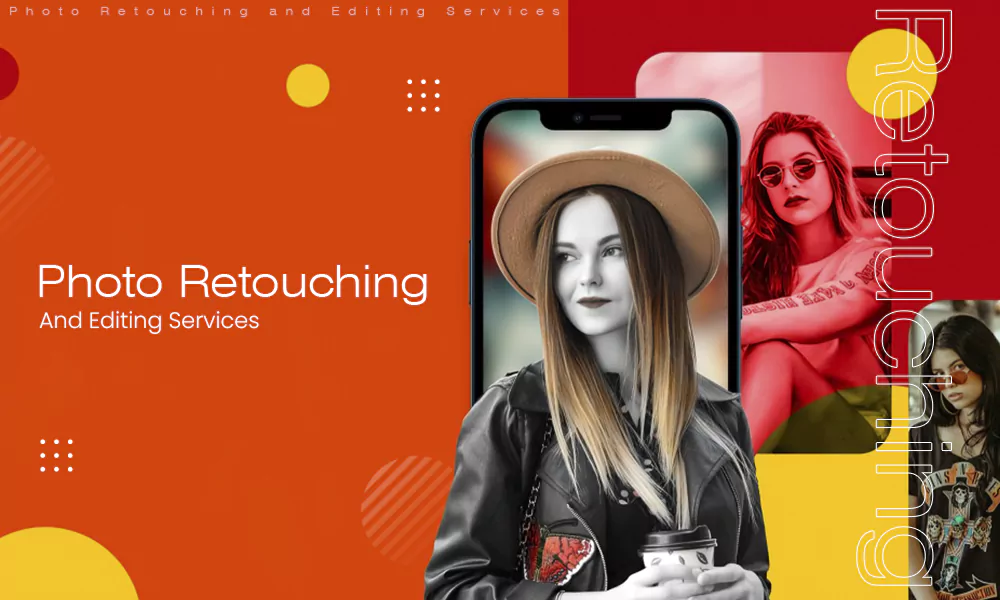You must have noticed that many of the images available online are very attractive and professional. Why not yours? Yes, you can also turn your average-looking images into bright and professional-looking images. This can be done with the help of – Photo Retouching.
In this digital age, images do not go directly from camera to print. A magical and effective process of photo retouching is between these processes. From fashion magazines to e-commerce websites, every beautiful picture that you see has probably gone through the process of retouching.
But what exactly is photo retouching? Is this the same as the filter applied to images? And why has it become so popular in visual content? In this article, we will make you understand photo retouching in depth, discuss its techniques, applications, advantages, and some possible disadvantages.
Whether you are new to photography, an experienced brand, or simply want to apply this magic to your photos to make them flawless. This guide is for you.
What is Photo Retouching?
At its core, photo retouching is all about making small, accurate adjustments that give an image its overall appeal. This is very different from simple photo editing. Basic photo editing may simply include cropping, resizing, and applying available filters; meanwhile, photo retouching is far more than that. The difference could simply be understood from an example, that editing is like cleaning your room, whereas retouching is renovating the whole room.
Retouching involves finalizing a flawless and professional-quality image. This may include numerous color adjustments to render color accuracy and consistency, or contrast correction to lighten dark areas or restore details to overexposed areas of a photo. Retouching an image includes numerous techniques, including detailed removal of flaws and blemishes such as scars or acne, or brightening the skin tone and texture, while maintaining the natural look.
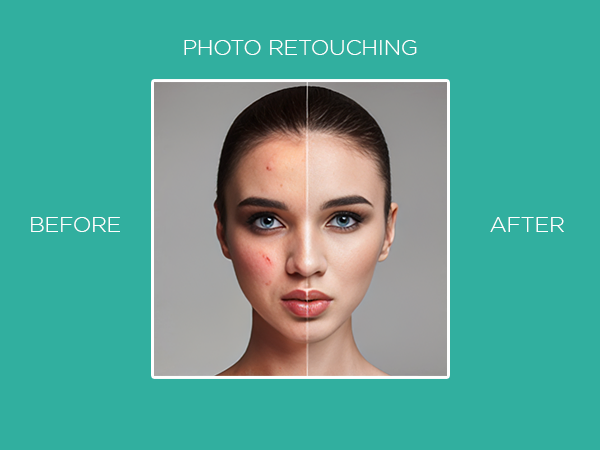
Why is Photo Retouching Essential?
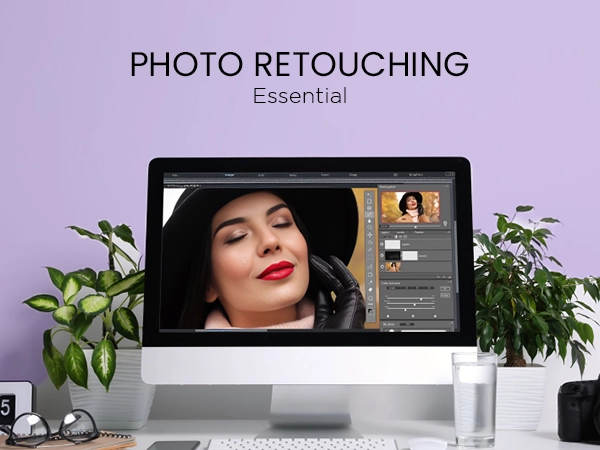
Photo retouching is very crucial for enhancing image quality and removing imperfections. It shows professionalism and helps brands attract attention. This leads to more interaction with content and increased sales. Businesses worldwide use professional photo retouching services. This includes fashion brands, online retailers, automotive companies, and digital marketing agencies.
The 2024 Data Intelo report says the global image retouching market will reach $5.8 billion by 2032. High-quality retouched images ensure consistency across platforms. They also evoke emotions and influence buying decisions, making them a great tool for boosting sales.
Why is Photo Retouching Essential for E-commerce Businesses?
In the competitive world of online shopping, photo retouching services are essential, as they enable customers to make more informed purchasing decisions. Well-edited product pictures make items appear more appealing. This makes buyers feel more confident and encourages them to purchase. Welpix shared a Shopify study in 2025. It found that high-quality product photos can increase sales by up to 250%. Even though Amazon, eBay, and Shopify have strict rules about the quality of images sellers can use.
Photo retouching offers many benefits for online stores, including:
- Boosts brand awareness and trust
- Highlights products as real and high-quality
- Increases website visitors and sales
- Lowers the number of product returns
Why is Photo Retouching Vital for Fashion Brands?
Image enhancement services ensure that clothing, accessories, jewelry, shoes, and cosmetics look perfect for fashion brands. To stand out in a crowded market, both famous brands and new designers rely on high-quality images. A brand’s identity and customer trust grow when its images are consistent across all platforms.
How fashion brands benefit from retouching:
- Creates attractive and appealing products
- Uses high-quality images to show strength
- Clearly shows the features and benefits of the product
- Increases revenue, traffic, and engagement
Why is Photo Retouching Crucial for Online Marketing & Advertising?
In digital marketing, eye-catching images are essential for an online business. Using photo retouching techniques, marketers can create scroll-stopping content that encourages clicks, engagement, and conversions. According to the HubSpot 2024 report, around 47% of marketers rely on high-quality images optimized for all platforms. Campaigns benefit from retouched images because they match audience expectations with brand messaging.
Impact of photo retouching on online marketing:
- Effectively conveys brand stories and values
- Increases credibility and professionalism
- Boosts the effectiveness of digital campaigns
- Encourages engagement, traffic, and paying customers
Why is Photo Retouching Important for Professional Photographers?
Photographers use portfolios like business cards. Professional photo retouching services help them enhance their work. These services ensure every shot highlights their skill and artistry. They also help tell a story. In today’s competitive field, well-edited photos improve a photographer’s image. This makes clients happier, too.
Benefits of photo retouching for photographers:
- Makes photos that are high-quality and have an impact
- Shows off your creativity and skills as a photographer
- Grabs attention and makes people feel strongly
- Makes clients trust and be happy with you for a long time
Elements of Photo Retouching
Retouching a photo consists of minor or major adjustments that enhance the overall appearance of an image. While simple photo editing can mean cropping, resizing, and applying filters, photo editing and retouching the image, such as removing blemishes, adjusting light, fixing color, or even reshaping items in the picture.
Some typical elements of retouching are:
- Smoothing skin and removing blemishes for portraits. It smoothens the skin texture without losing natural details such as fine lines.
- Retouching hair to remove flyaways. This may involve cleaning up stray hairs, called “flyaways”, to provide a smooth and clean appearance without creating unnatural-looking hair.
- Color correction to maintain natural hues. Making sure the colors in an image are aligned with the brand’s look.
- Background removal for product or model photography. This is a very popular part of retouching, as it is used in providing a neat background-removed image for an e-commerce website.
- Lighting adjustment and exposure correction for improved clarity. This helps in fixing too-light or too-dark images to give an overall balanced and professional appearance.
- Sharpening photos to emphasize minute detail and highlight subjects.
- Photo restoration is an advanced type of retouching for reviving old or damaged photographs by repairing scratches and tears.
Difference Between Photo Editing and Photo Retouching?
This is a very basic question that comes to the mind of beginners – “What is the difference between photo editing and retouching?”. The main difference between photo editing and retouching is the depth of the work.
At the core, photo editing is a combination of simple adjustment work, like cropping, rotating, resizing, or using preset filters, which comes under editing. Consider it a fast fixes that enhance overall aesthetics.
Whereas photo retouching goes deeper, focusing on precision and quality. It may involve Photoshop editing techniques like cloning, masking, dodging, and burning to remove imperfections or enhance specific details.
Briefly, editing is surface-level, while retouching is detail-oriented. A group of images is edited at once to give a uniform look, but you would only retouch the final, chosen image that needs perfect detailing. Professional photographers use a mixture of both – they edit a group of photos to achieve a uniform look, and retouch the individual hero shots.
Professional Use of Photo Retouching Techniques
Many beginners wonder- ‘What are photo retouching techniques? Here are some widely used methods professionals rely on for photo retouching techniques:
- Skin Smoothing & Blemish Removal – Useful in beauty and fashion photography, where a smooth skin appearance is a must. This allows professionals to use separation techniques, using which the texture of skin tone can be maintained without getting that plastic or fake look.
- Retouching Hair – Repairing stray hairs is a major aspect of portrait retouching without losing a natural texture. It is a fine art of separating individual hairs without leaving them ugly.
- Color Correction – Correcting tones is more than a basic filter. It involves uniforming skin tone across many images and ensuring the color of the image is the same as it appears in real life.
- Image Enhancement – This involves adjusting contrast, sharpness, and vibrance for greater effect. It makes the photo look more real and makes it alive.
- Picture Correction – This might be anything from repairing distortion, red-eye, or alignment problems.
- Background Removal – Particularly important in product photo retouching for e-commerce, using a pen tool in Photoshop to provide clean, accurate outlines, isolating the subject.
- Light Adjustment – Restoring details in overexposed or underexposed images is a very important skill for any professional retoucher.
- Image Manipulation – Advanced retouching methods employed to aesthetically modify a photo (for an ad campaign or art).
Each method can be utilized separately or used in tandem, based on whether portrait retouching, product photography editing, or photo restoration is being performed.
Common Tools for Photo Retouching
The market leader is still Photoshop with its extensive library of editing methods, including frequency separation, clone stamping, and layer changes. Other tools exist, depending on the level of expertise and needs, ranging from smartphone photo editing apps to professional desktop applications. Some of the popular ones are:
- Adobe Lightroom: Adobe Lightroom is a completely non-destructive tool, using which global effects can be applied to large batches of images.
- GIMP: This is the best tool for users with a smaller budget. It is a free and open source alternative to paid Photoshop.
- Luminar: This tool is equipped with advanced AI usage, which can perform complex tasks in a single click.
- Affinity Photo: This tool is preferred by editing enthusiasts and professionals as it offers various features at a lower price.
For beginners, various free photo retouching tools are available in the market. Although they cannot equal the sophistication of Photoshop, they are ideal for minor edits and temporary fixes.
What are the Various Types of Photo Retouching?
Retouching can be used in various industries. Some of the most significant examples are:
1. High-End Retouching
High-End Retouching is a premium photo retouching process that enhances images with precision while preserving natural details. It focuses on flawless refinement, color balance, and artistic enhancement without pixel distortion. This technique removes imperfections and delivers magazine-quality visuals.
Use cases: Commonly used in fashion, e-commerce, advertising, real estate, portrait, and model photography, high-end retouching ensures professional-quality images that captivate audiences and elevate brand value.
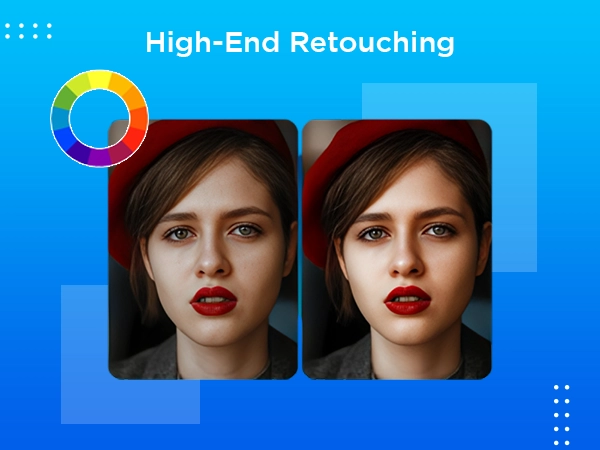
2. Headshot Retouching
Headshot Retouching aims to improve facial features while maintaining a natural appearance. It smooths the skin, eliminates blemishes, and enhances the overall appearance to produce a polished yet realistic image. This approach emphasizes both professionalism and approachability.
Use Cases: It is perfect for corporate headshots, business profiles, social media portfolios, and the entertainment industry, where impactful first impressions are essential.
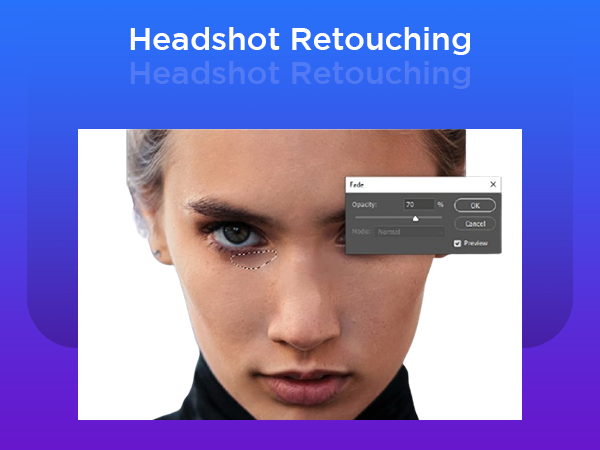
3. Commercial Retouching
The term “commercial retouching” means editing images for marketing and promotion. The attractive photos created by commercial retouchers grab users’ attention and boost brand traffic. This type of retouching includes light and color correction, highlighting features, and fixing defects.
Use cases: Commercial photo editing is used in digital and print media advertising, as well as online campaigns.
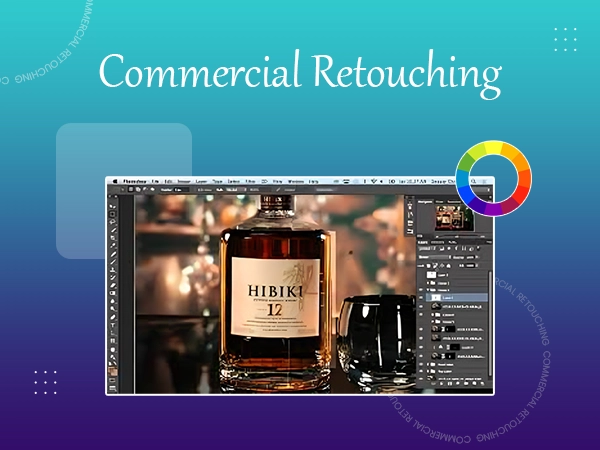
4. Fashion Retouching
A specialized editing technique called “fashion retouching” precisely improves the appearance of models and fashion product photos. It creates ideal, high-resolution images by eliminating flaws and enhancing colors, details, and overall attractiveness.
Use Cases: This method is essential for clothing, footwear, jewelry, skincare, cosmetics, healthcare, and professional fashion photographers looking to create powerful images. It encompasses beauty, product, and model retouching.
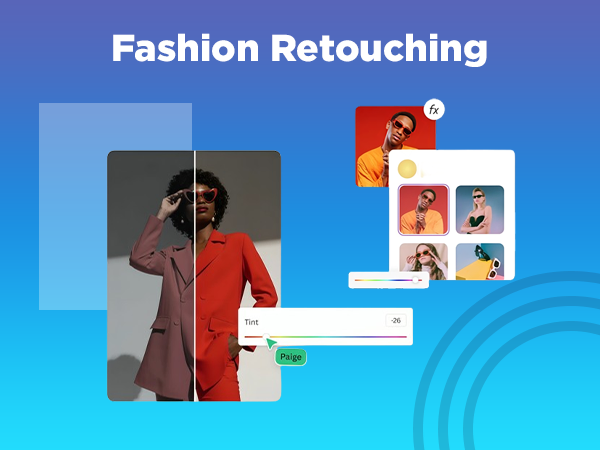
5. Portrait Retouching
Utilized in fashion, wedding, and lifestyle photography. It aims at skin smoothening, removal of blemishes, hair retouching, and brightening of facial features without making the subject appear fake.
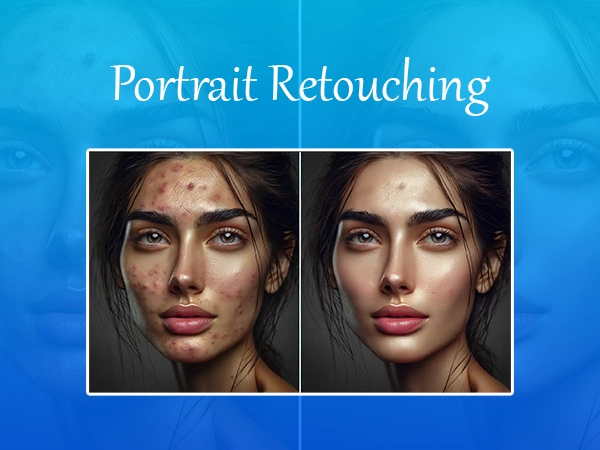
6. Product Photo Retouching
Companies are highly dependent on professional photo touch-up services for enhancing their products so that they appear perfect on websites and catalogs. Background elimination, image sharpening, and color adjustment are usually done.
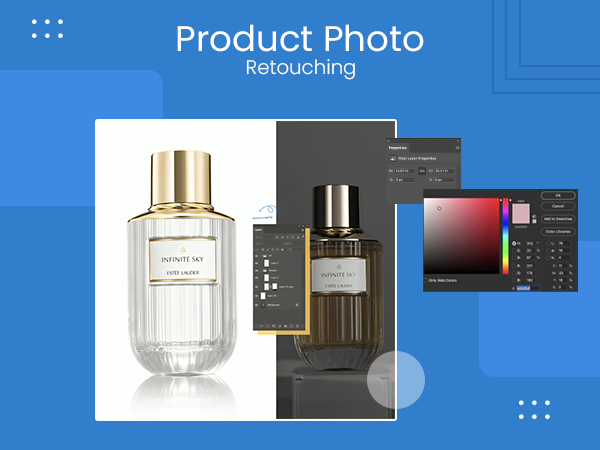
7. Photo Restoration
Older, worn-out photos can be restored and digitized through digital photo retouching. This process of image manipulation corrects scratches, restores lost color, and rebuilds missing information.
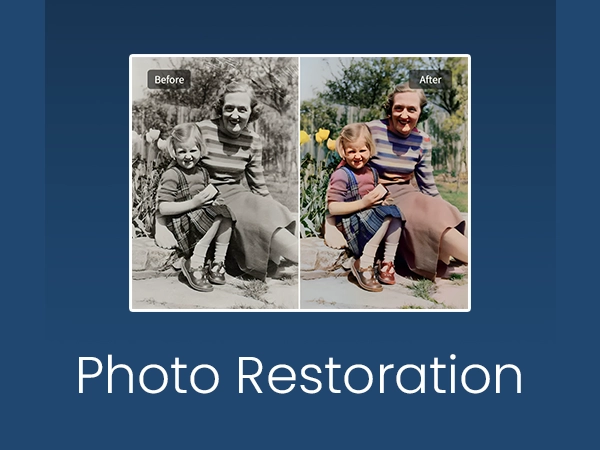
8. Beauty Retouching
The goal of beauty retouching is to create perfect, captivating photographs by improving model and beauty product photos. It covers everything from simple tweaks to sophisticated methods, including symmetry correction, color correction, and expensive retouching. By skillfully showcasing before-and-after impacts, these polished photos increase sales and client confidence.
Use Cases: Cosmetics, skincare, health improvement, and beauty product producers, as well as internet marketers and model photographers, employ beauty retouching.
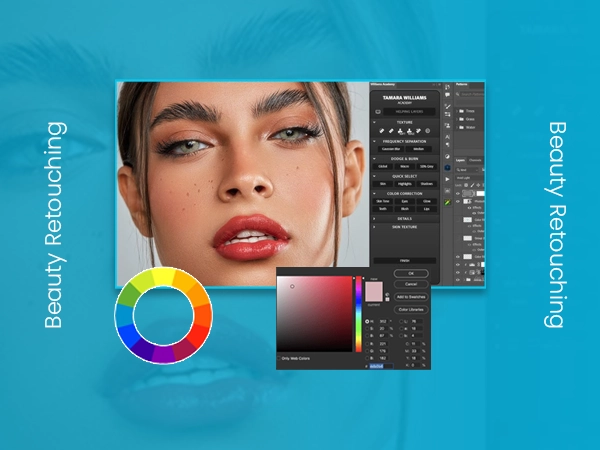
A Beginner’s Guide: How to Improve a Photo with Retouching
If you are just a beginner and want to know how to improve a photo. Here are some easy steps, which will provide you with a good start:
- Exposure balance: Make sure that the photo is neither too dark nor too light. A properly exposed image is the base of any great photograph.
- Color corrections: Correct unnatural color casts. For instance, if your image is yellow from interior lighting, use the white balance tool to fix it.
- Sharpening image: Sharpening an image can make it stand out, but be careful while sharpening your image, as overdoing it can bring a noisy appearance.
- Eliminate distractions: Use the healing brush to remove any distracting elements from the background. Even a small bulb can distract the viewer from the main subject.
- Skin smoothing: Try with simple, subtle adjustments. Remember that your main goal is to reduce the imperfections, not erase all the texture.
Even some simple and small changes can transform your photograph from lifeless to interesting and flawless.
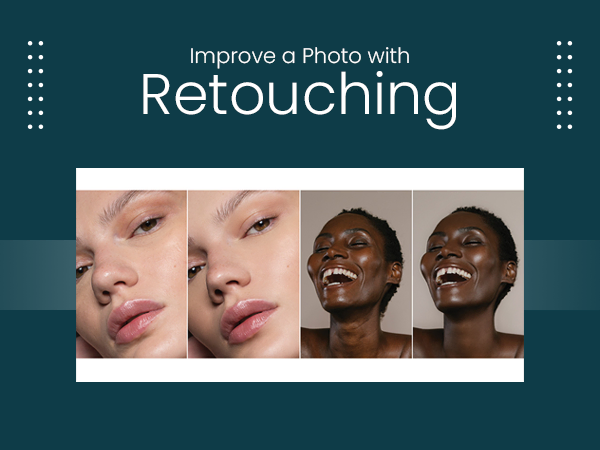
Possible Disadvantages of Photo Retouching
Although photo retouching services produce amazing outcomes, there are still some disadvantages to note:
- Over-retouching or excessive skin smoothing and image can give a plastic or artificial look to photos. Sometimes the natural look is the best look of an image.
- Professional standard retouching involves patience and precision, so it is a little bit time-consuming. Detailing of some complex images may take a night of retouching.
- For portrait photography, extensive retouching can encourage false beauty standards, setting unrealistic standards.
- For a beginner, involvement of professionals or advanced software can be costly.
So in short, retouching must be used to enhance a picture, not to hide or change the reality. It is about elevating what is already there, not about creating something new from scratch.
How to Know if a Photo is Retouched?
Finding if a photo is retouched or not can be difficult at times, but here are a few identifiable signs:
- Skin is appearing too perfect, with no texture, freckles, or pores visible. This means that this unnatural smooth skin is the result of retouching.
- Strange lighting reflections, like erratic shadows or highlights, are easily visible.
- Blurry or plastic-like surfaces, which means excessive use of smoothing brushes.
- The background is mismatched with the image; it is so blurry or out of the flow that it looks artificial.
The best professional retouchers are those who make their enhancements look seamless and natural.
Where to Get Professional Photo Retouching Services
If you’re running a brand, photographing a campaign, or just need your photos to pop, professional services can save you time and guarantee high-quality output.
Professional photo touch-up services such as those offered by Visuals Clipping are available for everything from portrait retouching to product photo retouching. Visual Clipping guarantees your pictures are brand consistent and visually appealing without the frustration of trial and error to learn advanced software.
Conclusion
So, photo retouching in basic terms is the process that makes a photo attractive and very professional by taking out its flaws—whether it is by removing blemishes, correcting color, making images sharper, or performing Photoshop editing work. Retouching does not just cover up blemishes; it lifts visuals so they can convey their stories, sell more online, and create impacts that last longer.
Working with professionals in photo retouching services can be an effective choice if you’re serious about your image presentation and know its importance. After all, in a competitive digital era, visuals don’t just capture attention—they shape perception. Let your images shine with professional retouching that makes every detail count.


